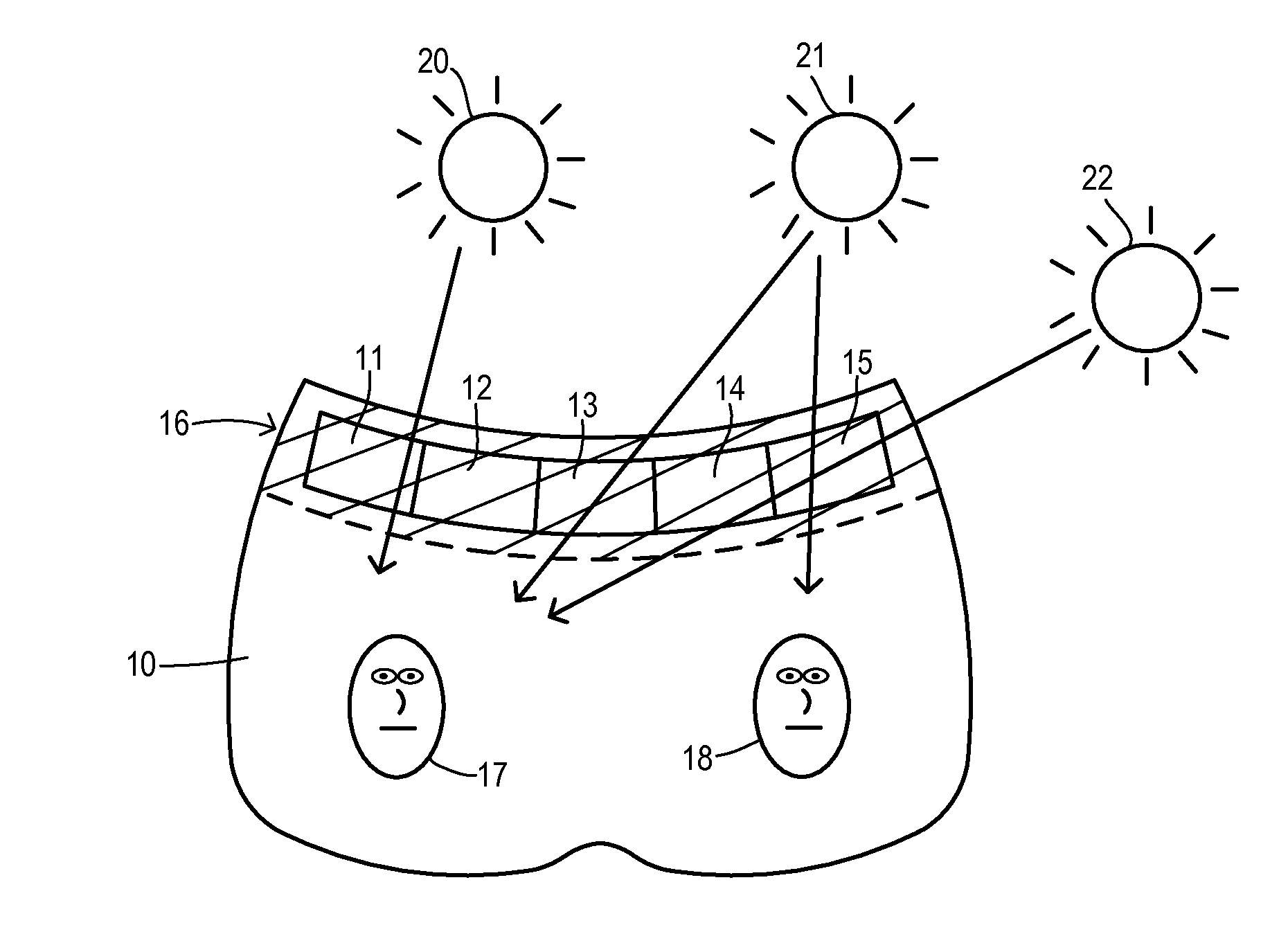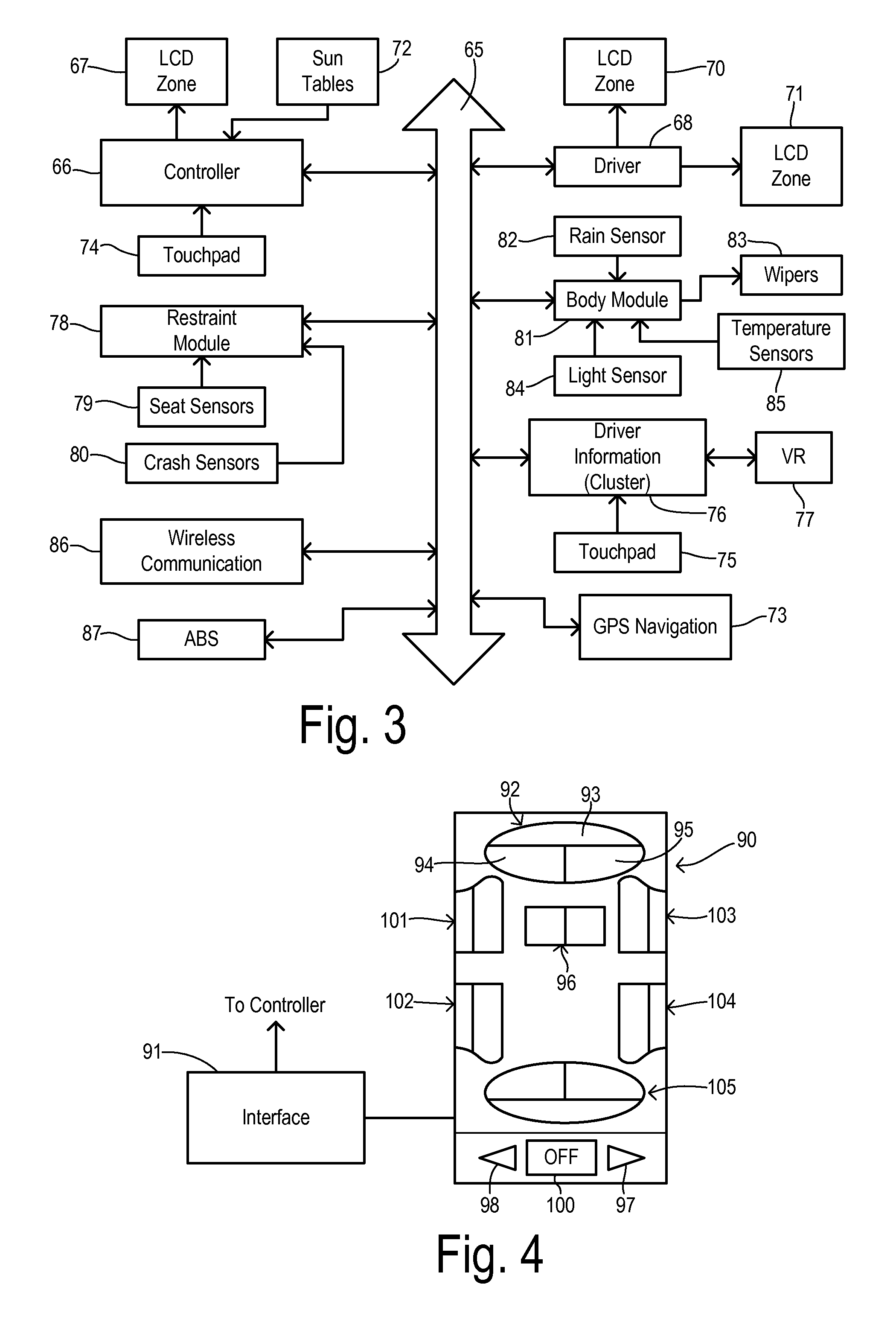Sun Protection System for Automotive Vehicle
a technology for automotive vehicles and sun protection systems, which is applied in the direction of fire alarms, instruments, navigation instruments, etc., can solve the problems of reducing reducing the fuel consumption of the internal combustion vehicle, and separating the problems of glare and heat, so as to reduce fuel consumption, improve the visibility of the driver, and optimize both visibility and heat flow.
- Summary
- Abstract
- Description
- Claims
- Application Information
AI Technical Summary
Benefits of technology
Problems solved by technology
Method used
Image
Examples
Embodiment Construction
[0016]The lamination of LCD structures comprising transparent electrodes positioned on opposite sides of a liquid crystal material and laminated with an automotive windshield for selectably blocking sunlight is shown in U.S. Pat. No. 5,638,202 to Rofe for the purpose of a heads-up display. Use of an addressable LCD-type variable transmittance element in a portion of a windshield is shown in U.S. Patent Application Publication US / 2010 / 0020170A1. What is lacking from the art and provided by the present invention is a hybrid or integrated automatic / manual control of liquid crystal zones to provide sun protection in a manner that promotes good visibility while blocking direct sunlight falling upon passengers in the vehicle under appropriate is conditions to reduce heating while leaving direct sunlight unattenuated during conditions when heating is desirable.
[0017]Turning now to FIG. 1, a windshield 10 is shown with a plurality of liquid crystal zones 11-15 applied at an upper edge 16. U...
PUM
 Login to View More
Login to View More Abstract
Description
Claims
Application Information
 Login to View More
Login to View More - R&D
- Intellectual Property
- Life Sciences
- Materials
- Tech Scout
- Unparalleled Data Quality
- Higher Quality Content
- 60% Fewer Hallucinations
Browse by: Latest US Patents, China's latest patents, Technical Efficacy Thesaurus, Application Domain, Technology Topic, Popular Technical Reports.
© 2025 PatSnap. All rights reserved.Legal|Privacy policy|Modern Slavery Act Transparency Statement|Sitemap|About US| Contact US: help@patsnap.com



